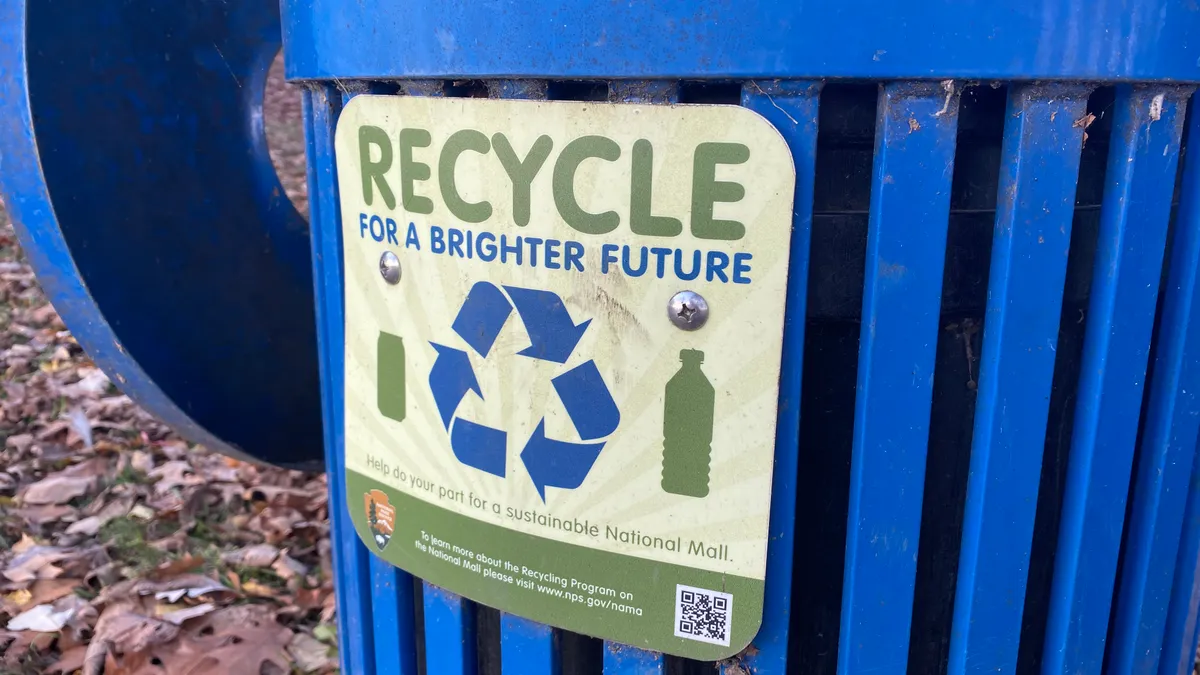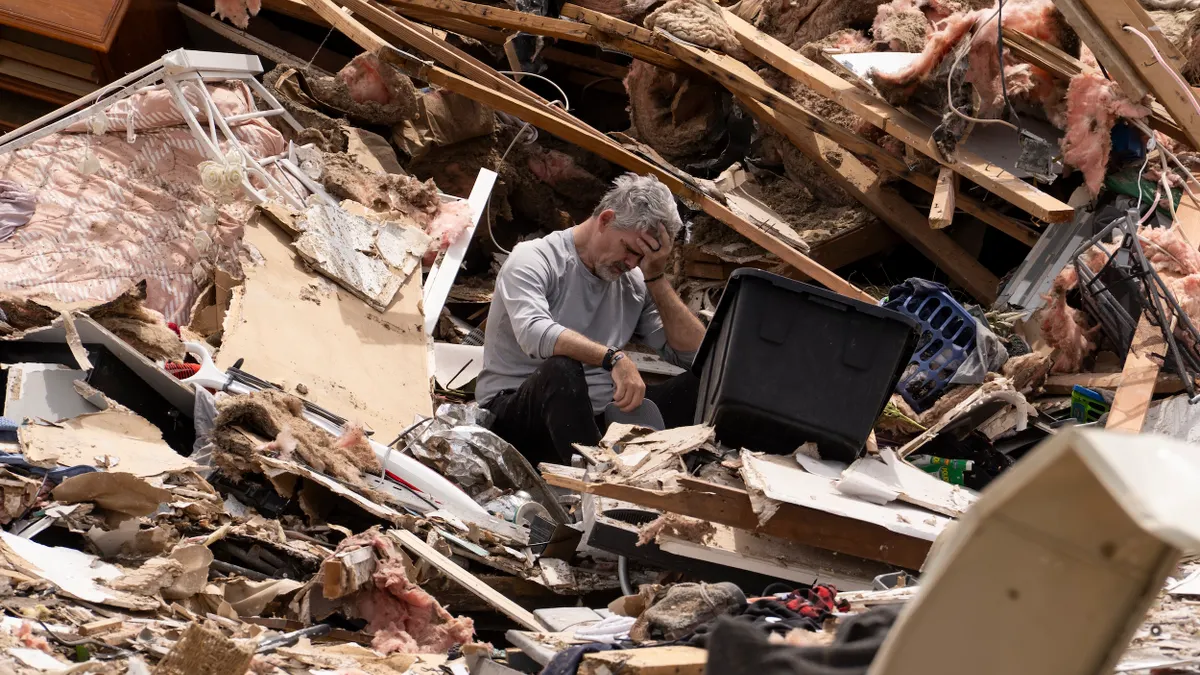What is recycling, exactly?
It’s a simple-sounding question with multifaceted answers that have evolved in recent years. The rise of technology like artificial intelligence, robotics and chemical recycling methods could change what types of materials are accepted in curbside bins and how facilities process and sell those materials, industry leaders say.
Policy changes may also come into play. States are deciding what materials will be covered under new extended producer responsibility systems and how producers will need to make those products more recyclable or manufactured with more recycled content.
Meanwhile, municipalities and recycling organizations say recycling systems must be more accessible and equitable, as well as less confusing for people.
Waste Dive last asked readers this question in 2019, in the aftermath of China’s significant scrap import restrictions that shook up commodity markets around the world and left many people wondering if this would create lasting changes for the way the U.S. recycles.
Though numerous groups have the same or similar recycling definitions today, other interpretations are leaving room for technology advancements, as well as evolving conversations about reuse strategies and recycling’s place in a broader circular economy.
In honor of America Recycles Day, Waste Dive again asked readers what “recycling” means to them and how that concept might evolve in coming years. This list also includes common definitions from government agencies, trade groups and other experts.
What definitions and considerations are we missing? Email us at [email protected].
Trade group and industry definitions:
Institute of Scrap Recycling Industries:
“Recycling is the series of activities during which obsolete, previously used, off-specification, surplus, or incidentally produced materials are processed into specification-grade commodities, and consumed as raw material feedstock, in lieu of virgin materials, in the manufacture of new products. The series of activities that make up recycling may include collection, processing, and/or brokering, and shall result in subsequent consumption by a materials manufacturer.”
Billy Johnson, ISRI’s chief lobbyist:
“Recycled materials are the source of the everyday items and essential infrastructure that we use in our lives. From automobiles to bridges, buildings, consumer electronics, and much more — recycled materials are in practically everything. As we celebrate America Recycles Day 2023, it is important to highlight the recycled materials industry’s constant innovation. From utilizing artificial intelligence for quality control, robotics to move and sort materials, or laser filtration systems to clean packaging — the recycled materials industry is part of the solution to a more sustainable and resilient future for our planet."
Solid Waste Association of North America:
″[Recycling is] the collection, sorting, marketing, processing, and transforming or remanufacturing of Recyclable Materials into Recycled Materials and Recycled Products, including marketing thereof; and the purchase and use of Recycled Products.”
“We continue to track new developments in recycling, including technologies and policies, that may impact our definition of recycling in the future.”

Kristyn Oldendorf
SWANA’s director of public policy
Government agency definitions
U.S. EPA:
“Recycling is the process of collecting and processing materials that would otherwise be thrown away as trash and turning them into new products. Recycling can benefit your community, the economy, and the environment. Products should only be recycled if they cannot be reduced or reused. EPA promotes the waste management hierarchy, which ranks various waste management strategies from most to least environmentally preferred. The hierarchy prioritizes source reduction and the reuse of waste materials over recycling.”
EPA Administrator Michael Regan on where recycling fits into the National Recycling Strategy:
“Our current recycling system is at a crossroads and desperately needs creative energy to better serve the needs of the American people. Some are confused about what materials can be recycled. In many areas of the country, our recycling infrastructure is antiquated. Markets for recyclables vary greatly, and we have no standardized way to measure system performance. Living near recycling facilities also takes a toll on already overburdened communities when materials are not properly managed.”
CalRecycle:
“Recycling is the practice of recovering used materials from the waste stream and then incorporating those same materials into the manufacturing process. California has a robust recycling infrastructure that manages beverage containers, organic material, electronic waste, carpet, used oil, paint, and mattresses. Most communities in California offer residential curbside collection or drop-off sites for certain recyclable materials.”
Nonprofit and industry consultant definitions
Craig Wittig, vice president of grant implementation for The Recycling Partnership
“The partnership looks at recycling like a reverse supply chain. It happens to be complex, and it's interdependent on a ton of different parties, like communities, local governments, companies, policy makers, and residents or individuals that have to work together to unlock environmental and economic benefits. As we look at recycling, what it takes to deliver the best recycling system is [to ensure] that residents have access and provide education to residents so they know how to recycle. We need to make sure the packaging that they purchase is recyclable. We need to support policies to pay for it, and we need to invest in the future in this circular environment to provide a more circular economy.”
Michael Washburn, recycling policy and NGO consultant:
“Recycling is the individual act of choosing to keep material in use instead of creating waste and unnecessary costs to society. It quickly ladders up to meaningful change and remains one thing that everyone can do. Some folks remain confused about how to recycle and some may not even have access to it in their homes so we need to solve for that, but the idea that it is somehow a myth or doesn’t work is a false narrative.”
“Recycling is the use of material diverted from disposal in the production of new consumer goods.”

Will Sagar
Executive director of the Southeast Recycling Development Council
National Recycling Coalition:
“Recycling is a series of activities by which material that has reached the end of its current use is processed into material utilized in the production of new products.”
Keyna Cory, executive director of the Florida Recycling Partnership:
“I believe that recycling is breathing new life into an item instead of sending it to a landfill. Giving it a second chance to be another useful item. Recycling conserves our precious natural resources, reduces waste, and lowers the environmental impact of extracting, producing, and disposing of raw materials. Recycling supports the economy by creating jobs in the recycling industry and encourages innovation in sustainable materials and technologies.”
Jennifer Lawson, president and CEO of Keep America Beautiful
“For Keep America Beautiful, recycling is a reminder that nothing ever really gets thrown ‘away.’ ‘Away’ isn’t a place; we all live on a planet with limited resources, and recycling is an opportunity to reuse valuable materials that we already have in our homes or at work. We must take advantage of these reusable resources to reduce the burden on nature and end the idea of landfills as a final resting place for our stuff. Between recycling, reusing, reducing, and composting, we all have the ability to make a significant impact on our ecological footprint while ensuring a beautiful planet for future generations. America Recycles Day puts a spotlight on the fact that we have an opportunity to do beautiful things for the greater good every day.”




















